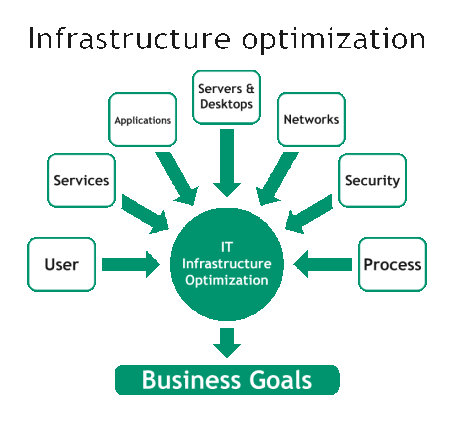
In today’s fast-paced digital world, having a well-optimized IT infrastructure is crucial for businesses to stay ahead of the competition. With technology evolving at a rapid pace, it is essential to ensure that your IT systems are optimized to deliver the highest level of efficiency and performance. In this article, we will explore the key strategies and best practices for IT infrastructure optimization.
Assessing the Current State of Your IT Infrastructure
Before diving into optimization strategies, it is essential to assess the current state of your IT infrastructure. This allows you to identify areas that need improvement and prioritize your optimization efforts. Conduct a comprehensive audit of your hardware, software, network, and security systems to identify any bottlenecks or areas of inefficiency.
Consider engaging expert IT consultants who can perform a detailed analysis and give you insights into the current health and performance of your infrastructure. A thorough assessment will help you identify areas for improvement and provide a clear roadmap for optimization.
Implementing Virtualization and Cloud Technologies
One of the most effective ways to optimize your IT infrastructure is by leveraging virtualization and cloud technologies. Virtualization allows you to consolidate your physical hardware resources into virtual machines, which improves resource utilization and minimizes costs. By virtualizing your servers, storage, and networks, you can enhance your infrastructure’s scalability, flexibility, and efficiency.
Cloud technologies provide even more opportunities for optimization. By moving certain workloads and applications to the cloud, you can reduce the burden on your local infrastructure and leverage the scalability and cost-effectiveness of cloud service providers. This helps to free up resources and improve overall system performance.
Enhancing Network Performance
Your network infrastructure plays a crucial role in the overall performance and efficiency of your IT systems. To optimize your network, start by analyzing your current bandwidth utilization and network traffic patterns. Identify any bottlenecks or areas of congestion that may be affecting performance.
Consider implementing network segmentation to improve security and performance. By dividing your network into smaller, isolated segments, you can minimize the impact of network congestion and enhance data security. Additionally, investing in high-performance networking equipment and implementing Quality of Service (QoS) policies can improve overall network performance and optimize the flow of data.
Streamlining and Automating Processes
Manual and inefficient processes can hinder the performance and productivity of your IT infrastructure. To optimize your systems, identify areas where automation can be implemented. Automating routine and repetitive tasks not only saves time but also reduces the risk of human error and improves overall efficiency.
Consider deploying IT service management (ITSM) tools to streamline workflows and automate service requests, incident management, and change management processes. By implementing ITSM best practices, you can better manage and optimize your IT infrastructure while ensuring consistent service delivery.
Ensuring Robust Security Measures
Optimizing your IT infrastructure goes hand in hand with ensuring robust security measures. With the increasing sophistication of cyber threats, it is crucial to implement comprehensive security solutions to protect your systems and data.
Invest in modern security technologies such as firewalls, intrusion detection systems, and advanced endpoint protection solutions. Regularly update your software and firmware to patch any vulnerabilities. Implement role-based access controls (RBAC) and regularly review user access privileges to minimize the risk of unauthorized access.
Also, consider educating your employees on cybersecurity best practices to foster a security-conscious culture within your organization. Security should be an ongoing focus, with regular security audits and assessments to identify any weaknesses and address them promptly.
Monitoring and Performance Optimization
Optimization is an ongoing process. To ensure continued efficiency and performance, it is essential to monitor your IT infrastructure regularly. Implement robust monitoring tools that provide real-time insights into the health, performance, and availability of your systems.
Monitor crucial metrics such as resource utilization, network latency, and application response times. By analyzing this data, you can identify trends and potential bottlenecks, allowing you to take proactive measures to optimize your infrastructure further.
Conclusion
Optimizing your IT infrastructure is essential for ensuring maximum efficiency, performance, and security. By conducting a thorough assessment of your current infrastructure, leveraging virtualization and cloud technologies, enhancing network performance, automating processes, implementing robust security measures, and monitoring performance, you can streamline your IT operations and stay ahead of the competition.
Investing in IT infrastructure optimization not only improves your overall business operations but also enhances customer satisfaction and helps you adapt to the ever-changing technology landscape.

